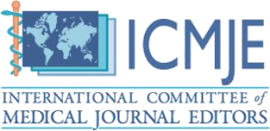Challenges of Teaching Chinese as a Subject in an English-dominated Region: Focus on Sindh, Pakistan
DOI:
https://doi.org/10.51611/iars.irj.v12i01.2022.182Keywords:
Chinese, English, Languages, Sindhi, UrduAbstract
Sindh is a multilingual province in Pakistan where politics of language and clash of language ideologies have played a significant role. English is viewed as a language of power, and Urdu is generally considered as a symbol of national cohesion in Pakistan. In Sindh both these languages are used in official and educational domains In Sindh’s language ecology, English occupies an important position. In addition to these two languages, Sindhi is widely spoken and is associated with Sindh’s regional and ethnic consciousness. Pakistan's pivot to China policy is slowly impacting language policy and planning in Sindh. Politicians have started talking about making Chinese a compulsory subject from grade 6 onwards in Sindh’s educational institutions. However, this language policy decision has met resistance from the English-speaking class, and the Urdu, Seraiki, and Sindhi speech communities who look at the imposition of Chinese language with distrust. The aim of this research article is to investigate how language teachers and students in Sindh react to the Chinese language policy and planning. A survey questionnaire was sent to participants to explore their perceptions of imposing the Chinese language in Sindh. 33 participants aged between 20 to 40 responded to 14 questions included in the survey. Extracts taken from their responses were codified into broader themes and qualitative analysis was carried out using Philipson’s (1992) imperialism concept. The findings showed that the pro-Chinese class is struggling to replace English in an ecology of language where speakers of minor languages are already resisting the hegemony of major languages.
Key words: Chinese; English; Languages; Sindhi; Urdu
Downloads
References
Acheraïou, A. (2011). Questioning hybridity, Postcolonialism and globalization. Springer. DOI: https://doi.org/10.1057/9780230305243
Alexis-Martin, B. (2019). The nuclear imperialism-necropolitics nexus: Contextualizing Chinese-Uyghur oppression in our nuclear age. Eurasian Geography and Economics, 60(2), 152-176. https://doi.org/10.1080/15387216.2019.1645611 DOI: https://doi.org/10.1080/15387216.2019.1645611
Ali, A., & David, M. K. (2021). A historical institutionalism approach to the politics of languages of Pakistan. Journal of Humanities and Social Sciences Research, 3(1), 75-90. https://doi.org/10.37534/bp.jhssr.2021.v3.n1.id1086.p75 DOI: https://doi.org/10.37534/bp.jhssr.2021.v3.n1.id1086.p75
Ali, Z. (2021). Becoming an English teacher in postcolonial Pakistan and Australian classrooms: Negotiating difference in postcolonial settings. Changing English, 28(1), 45-57. https://doi.org/10.1080/1358684x.2020.1815521 DOI: https://doi.org/10.1080/1358684X.2020.1815521
Baogang, H. (2013). The power of Chinese linguistic imperialism and its challenge to multicultural education. Minority Education in China, 45-64. https://doi.org/10.5790/hongkong/9789888208135.003.0003 DOI: https://doi.org/10.5790/hongkong/9789888208135.003.0003
Baralt, M., & Bravo, M. L. (2016). Teaching Chinese as a foreign language: A classroom study on the timing of grammar around a task. Chinese as a Second Language Research, 5(1), 27-61. https://doi.org/10.1515/caslar-2016-0002 DOI: https://doi.org/10.1515/caslar-2016-0002
Canagarajah, S., & Said, S. B. (2016). Linguistic Imperialism. In The Routledge Handbook of Applied Linguistics. Routledge.
Conti, S., & Lepadat, C. (2021). Situation-bound utterances in Chinese as a foreign language: The effectiveness of the identification task. Chinese as a Second Language Research, 10(1), 1-29. https://doi.org/10.1515/caslar-2021-0001 DOI: https://doi.org/10.1515/caslar-2021-0001
David, M. K. and Saeipoor, N. (2018) “Integrating Soft Skills into Courses in Malaysian Public Universities: (Undergraduates’ Perception)”, IARS’ International Research Journal. Victoria, Australia, 8(1). doi: 10.51611/iars.irj.v8i1.2018.83. DOI: https://doi.org/10.51611/iars.irj.v8i1.2018.83
Dawn. (2015, March 25). Accord signed to teach Chinese in Sindh schools. DAWN.COM. https://www.dawn.com/news/1171645/accord-signed-to-teach-chinese-in-sindh-schools
Durrani, M. (2012). Banishing Colonial Specters: Language Ideology and Education Policy in Pakistan. 27 (1), Retrieved from https://repository.upenn.edu/wpel/vol27/iss1/3.
Ejaz, K., & Masood, M. (2019). Neo-imperialism: a case study of China Pakistan economic corridor. Journal of Politics and International Studies, 5(1), 85-96.
Gao, Y. (2020). undefined. Sustainability, 12(14), 5506. https://doi.org/10.3390/su12145506 DOI: https://doi.org/10.3390/su12145506
Gong, Y., Gao, X., & Lyu, B. (2020). Teaching Chinese as a second or foreign language to non-Chinese learners in Mainland China (2014–2018). Language Teaching, 53(1), 44-62. https://doi.org/10.1017/s0261444819000387 DOI: https://doi.org/10.1017/S0261444819000387
Gong, Y., Lai, C., & Gao, X. (2020). The teaching and learning of Chinese as a second or foreign language: The current situation and future directions. Frontiers of Education in China, 15(1), 1-13. https://doi.org/10.1007/s11516-020-0001-0 DOI: https://doi.org/10.1007/s11516-020-0001-0
Hanban [Confucius Institute (2019a). About Confucius Institute/Classroom. Hanban website. Retrieved from http://www.hanban.org/confuciousinstitutes/node_10961.htm [Google Scholar].
Jabeen, F. (2019). The perpetuation of colonial legacy: Uncovering internal orientalism in the form of English supremacy in Pakistan. Journal of Multilingual and Multicultural Development, 41(5), 432-443. https://doi.org/10.1080/01434632.2019.1653303 DOI: https://doi.org/10.1080/01434632.2019.1653303
Jakhar, P. (2018, February 28). Reality check: Is Chinese an official language in Pakistan? BBC News. https://www.google.com/amp/s/www.bbc.com/news/world-asia-43158523.amp
Jiang, X., & Cohen, A. D. (2012). A critical review of research on strategies in learning Chinese as both a second and foreign language. Studies in Second Language Learning and Teaching, 2(1), 9. https://doi.org/10.14746/ssllt.2012.2.1.2 DOI: https://doi.org/10.14746/ssllt.2012.2.1.2
Liu, X. (2019). So similar, so different, so Chinese: Analytical comparisons of the Confucius institute with its western counterparts. Asian Studies Review, 43(2), 256-275. https://doi.org/10.1080/10357823.2019.1584602 DOI: https://doi.org/10.1080/10357823.2019.1584602
Ma, X., Gong, Y., Gao, X., & Xiang, Y. (2017). undefined. Journal of Multilingual and Multicultural Development, 38(9), 815-830. https://doi.org/10.1080/01434632.2016.1268146. Manan, S. A., David, M. K., & Dumanig, F. P. (2016). English language teaching in Pakistan: Language policies, delusions, and solutions. Language Policy, 219-244. https://doi.org/10.1007/978-3-319-22464-0_10 DOI: https://doi.org/10.1007/978-3-319-22464-0_10
Mane, D. (2013) “Improving Teaching Efficiency by Using ACTIVITY-TOOL for MBA Students: Innovative Teaching Methodology”, IARS’ International Research Journal. Victoria, Australia, 3(2). doi: 10.51611/iars.irj.v3i2.2013.31. DOI: https://doi.org/10.51611/iars.irj.v3i2.2013.31
Melvin, O. (2020). Clarifying the Conceptualization of Empire: Is China's Belt and Road Initiative an Attempt at Empire? [Master's thesis https://egrove.olemiss.edu/hon_thesis/1486/
NAQVI, S. S. (2017). 'Urdu imperialism' in Pakistan: Reality or myth. IJASOS- International E-journal of Advances in Social Sciences, 387-390. https://doi.org/10.18769/ijasos.336558 DOI: https://doi.org/10.18769/ijasos.336558
Nordquist, R. (2019). What is linguistic imperialism and how does it affect society? ThoughtCo. Retrieved July 1, 2021, from https://www.thoughtco.com/what-is-linguistic-imperialism-1691126
Paradise, J. F. (2009). China and international harmony: The role of Confucius institutes in bolstering Beijing's soft power. Asian Survey, 49(4), 647-669. https://doi.org/10.1525/as.2009.49.4.647 DOI: https://doi.org/10.1525/as.2009.49.4.647
Phillipson, R. (1992). undefined. Oxford University Press.
Qingpu, Z. (2019). undefined. Bulletin of Concerned Asian Scholars, 23(4), 57-64. https://doi.org/10.1080/14672715.1991.10413143 DOI: https://doi.org/10.1080/14672715.1991.10413143
Reeves, J. (2018). Imperialism and the Middle Kingdom: The Xi Jinping administration’s peripheral diplomacy with developing states. Third World Quarterly, 39(5), 976-998. https://doi.org/10.1080/01436597.2018.1447376 DOI: https://doi.org/10.1080/01436597.2018.1447376
Smith, M. D., & Donghwan, K. (2015). English & Linguistic Imperialism: A Korean Perspective in the Age of Globalization. The Journal of Mirae English Language and Literature, 20(2), 331-350.
Sparks, C. (2014). Deconstructing the Brics. International Journal of Communication, 8, 392-418.
Sparks, C. (2018). undefined. Global Media and China, 3(2), 92-99. https://doi.org/10.1177/2059436418778935 DOI: https://doi.org/10.1177/2059436418778935
The Uyghur Human Rights Project. (2019). The Uyghur Human Rights Report. Google. Retrieved June 30, 2021, from https://www.google.com/url?sa=t&source=web&rct=j&url=https://www.state.gov/reports/2019-country-reports-on-human-rights-practices/china/%23:~:text%3DThe%2520Uyghur%2520Human%2520Rights%2520Project,Uighur%2520scholars%2520and%2520cultural%2520icons.%26text%3DFive%2520intellectuals%2520identified%2520in%2520the,camp%2520or%2520shortly%2520after%2520release.&ved=2ahUKEwjqxsSezr_xAhWLz4UKHZ_nCGEQFjABegQIBBAF&usg=AOvVaw1IYMhSF8yNtpphLQEcX-0Q
Wenfeng, W., & Gao, X. (2008). English language education in China: A review of selected research. Journal of Multilingual and Multicultural Development, 29(5), 380. https://doi.org/10.2167/jmmd600.0. DOI: https://doi.org/10.1080/01434630802147908
Xie, T., & Special for CNN. (2014, October 21). China guilty of cultural imperialism? CNN. https://edition.cnn.com/2014/10/21/opinion/china-confucius/index.html
Xinhua. (2019). Pakistani students show keen interest in learning Chinese language - Xinhua | English.news.cn. 新华网_让新闻离你更近. https://www.xinhuanet.com/english/2019-08/28/c_138345891.htm
Zhao, H., & Huang, J. (2010). China’s policy of Chinese as a foreign language and the use of overseas Confucius institutes. Educational Research for Policy and Practice, 9(2), 127-142. https://doi.org/10.1007/s10671-009-9078-1. DOI: https://doi.org/10.1007/s10671-009-9078-1
Downloads
Published
Issue
Section
License
Copyright (c) 2022 Ameer Ali, Maya Khemlani David

This work is licensed under a Creative Commons Attribution 4.0 International License.
Author(s) hold complete right on the content of this article. Copyright to the content are governed as per Copyright Policy of the Journal.





















